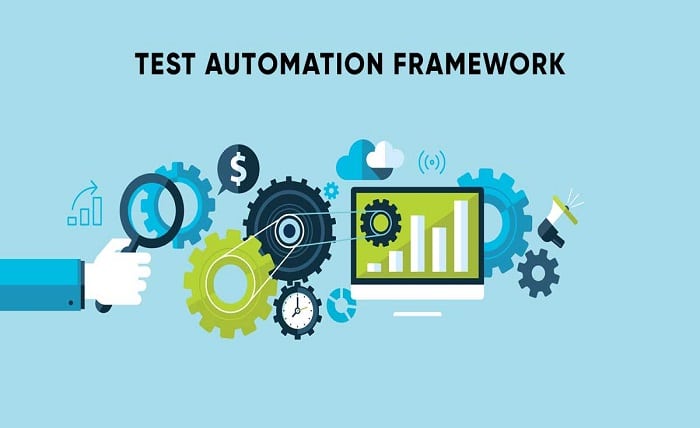Embracing Change in Software Development
In the fast-paced world of software development, efficiency reigns supreme. Every minute saved pushes a product closer to market readiness, and quality ensures it thrives once it gets there. Enter the revolution dubbed ‘Test Automation Frameworks’—the ace up the sleeve of software testers worldwide. If you’re striving to bolster your software’s integrity while slashing down on time and resources spent, this technological marvel is your answer.
The Essence of Test Automation Frameworks
A test automation framework is more than just a buzzword. It’s a structured environment bestowed upon developers and testers that facilitates automated testing with less coding. Think of it as an efficient conveyor belt in a factory that systematically addresses each aspect of software testing. By embracing these frameworks, you’re essentially equipping yourself with an arsenal to combat software bugs and glitches rigorously but also tactically.
Why You Should Care: Benefits Galore
Diving into the realm of test automation frameworks isn’t just about keeping up with trends. It’s about tangible benefits that can revolutionize your workflow:
- Improved Test Efficiency: Automated test scripts run faster and can be executed more frequently.
- Enhanced Accuracy: Human error gets dramatically reduced, ensuring consistency across iterations.
- Increased Coverage: More tests can run in tandem, extending the breadth and depth of your software testing.
- Cost Savings: Initial set-up aside, automation leads to considerable reductions in the long-term cost of testing.
Harnessing the Potential: Types of Automation Frameworks
Test automation isn’t a monolith; it contains a spectrum of frameworks tailored for varied needs and capabilities:
- Linear Automation Framework: Best suited for small, straightforward projects.
- Modular Testing Framework: It breaks down the application into smaller modules leading to better manageability.
- Data-Driven Framework: Here the data influences the flow of testing, providing flexibility and scalability.
- Keyword-Driven Testing: Non-technical stakeholders can get involved, thanks to a keyword-focused approach.
- Hybrid Testing: Combining elements from various frameworks, it offers a customized testing environment.
Choosing Wisely: Picking the Right Framework
Deciding on the right test automation framework rests on a few pivotal factors:
- Project Scope: How extensive is your software? Its complexity and size will weigh in on your choice.
- Team Expertise: The technical skill level of your team is critical in managing and utilizing the chosen framework effectively.
- Flexibility and Maintenance: You’ll need a framework that aligns with your maintenance capabilities and the expected changes over time.
- Cost Analysis: Weigh the initial investment against the long-term efficiency and error reduction it brings.
Integration and Implementation: Streamlining Your Testing Process
With the type set, implementation is where the magic happens. Ensure seamless integration of the test automation framework within your existing software development life cycle. Regular reviews and updates to the automation scripts will maintain efficiency as your software grows and changes.
Actionable Insights: Getting the Most from Test Automation
Here are some hands-on tips to make the test automation framework work for you:
- Automate Where It Counts: Start with repetitive and time-consuming tasks. Not everything requires automation.
- Prioritize Continuous Learning: Stay updated with the latest in testing technologies to keep your framework and skills relevant.
- Monitor and Refine: Constantly analyze the results and refine the tests for better accuracy and efficiency.
- Collaborate and Share: Foster a culture of knowledge sharing within your team to maximize the usage of the automation tools at hand.
Navigating the Common Pitfalls
Even the best of technologies come with their challenges. For test automation frameworks, awareness of common pitfalls is key:
- Over Automation: Guard against automating too much, too soon. Always aim for a balance.
- Neglecting Manual Testing: Manual testing still has a place. It helps uncover issues that automation might skip.
- Ignoring Maintenance: Automated tests need upkeep. Regular reviews stop them from becoming obsolete.
Conclusion: The Path Ahead with Automation
Test automation frameworks are changing the landscape of software testing, promising more agile, accurate, and cost-effective testing strategies. They embody the progress that technology brings to the software development field. It’s about working smarter, not just harder, and getting your product to shine among its peers.
To thrive in this revolutionized environment, stay agile, choose wisely, and embrace the change. Remember, the frameworks are tools at your disposal, meant to amplify your software’s value and reliability. Utilize them, and witness your software testing process transform not just in speed, but in quality and depth. The future of software testing isn’t just automated; it’s strategic. And it starts with a solid foundation in test automation frameworks.

